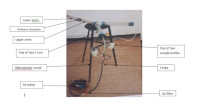Palm wines as potential Aedes mosquito repellant
Main Article Content
Abstract
Globally, Aedes mosquitoes cause morbidity and mortality of dengue, yellow fever and other arboviral infections. There is no effective vaccine for Aedes transmitted diseases so mosquito control remains the mainstay for their control. Semiochemicals play significant role in modulating insect behavior so are utilized to lure mosquitoes to their destruction or to repel them to halt infection transmission. Palm wines are potent source of semiochemicals but their effect on Aedes mosquitoes in our locality is not well understood. This study was undertaken to ascertain whether palm wine could impact on mosquito inflections. Aedes larvae were collected and bred in the laboratory to adulthood. Female mosquitoes were selected and tested for their reactions to two categories of palm wine – the up-palm and down-palm wines. An olfactometer was fabricated and applied to find how Aedes mosquitoes reacted in it when subjected to odours from the palm wines within 5 minutes. Data obtained were prepared and one way analysis of variance was used to compare means. Only 3% of mosquitoes reached the up-wine arm on day 2. However, when both wines were tested, 2.78 ± 2.78% of mosquitoes reached the down-palm wine terminal. Both wines repelled mosquitoes consistently, confirmed by their refusal to seek any of the palm wine odours. Repellence increased as days passed: initially upstream mosquitoes ranged 36.36 – 60% at the beginning, declining to 3.3 – 6.36% on the 8th day; whereas downstream ranged from 40 – 63.63% at the beginning to reach 93.63 – 100% on the 8th day. Palm wines semiochemicals repelled Aedes mosquitoes. Further testing may be required before utilization in formulated repellents for public use.
Downloads
Article Details

This work is licensed under a Creative Commons Attribution-NonCommercial-NoDerivatives 4.0 International License.
References
Bernier U. R, Kline D. L, Posey K. H., Booth M. M., Yost R. A. and Barbard, D. R. (2003). Synergistic attraction to Aedes aegypti (L) to binary blend of L-lactic acid and acetone, dichloromethane, or dimethyl disulphide. Journal of Medical Entomology, 40(5), 653 – 656.
Dekker, T., Ignell, R., Ghebru, M., Glinwood, R., and Hopkins, R. (2011). Identification of mosquito repellent odours from Ocimum forskolei. Parasites & vectors, 4, 1 – 7.
Hales, S. N. Wet J., and Guzman, M. N. (2002). Potential effects of population and climate changes on global distributionn of dengue fever: an empirical model. Lancet, 360, 360 – 834.
Himeidan, Y. E., Temu, E. A., El Rayah, E. A., Munga, S., and Kweka, E. J. (2013). Chemical cues for malaria vectors oviposition site selection: challenges and opportunities. Journal of Insects, 2013, 1 – 9.
Hoel, D. F., Kline D. L., Allan S. A. and Grant A. (2007). Evaluation of carbon dioqide , iocten-3-ol and lactic acid as baits in mosquitoes magnet tm pro traps for Aedes albopictus in North Central Florida. Journal of American Mosquitoes Control Association, 23(1), 11 – 17.
Muktar Y.,Tarmerat N. and Shewafera A. (2016). Aedes aegypti as a vector of Flavivirus. Journal of Tropical Diseases, 4(5), 1 –7.
Mweresa C. K., Omusula P., Otieno B., Van Loon J. J., Takken W. and Mukabuna W. R. (2014). molases as source of carbondioxide for attracting malaria mosquitoeses Anopheles gambiae and Anopheles funestus. Malaria Journal,13(1), 160 – 173.
Obahiagbon, F. I. (2012). A review: aspects of the African oil palm (Elaeis guineensis Jacq.) and the implications of its bioactives in human health. American Journal of Biochemistry and molecular Biology, 2(3), 106 – 119.
Paixão, E. S., Teixeira, M. G., and Rodrigues, L. C. (2018). Zika, chikungunya and dengue: the causes and threats of new and re-emerging arboviral diseases. British Medical Journal Global Health, 3(1), e000530.
Soni, M., Bhattacharjee, C. K., Khan, S. A., and Dutta, P. (2018). DNA barcoding as a complementary approach for species identification from dengue endemic regions of North East India. International Journal of Mosquito Research, 5: 46 – 52.
Soares, I. M. N., Polonio, J. C., Zequi, J. A. C., and Golias, H. C. (2022). Molecular techniques for the taxonomy of Aedes Meigen, 1818 (Culicidae: Aedini): a review of studies from 2010 to 2021. Acta Tropica, 106694.
Toma L., Di-Luca M., Severini F.,Bocccolini D., and Romi R. (2011). Aedes aegypti: risk of introduction in Italy and strategy to detect possible re-introduction. Pest Management Salute Publica, 23, 18 –26.
Ukwuru, M. U. and Awah J. I. (2013) Properties of palm wine yeasts and its performance in wine making. African Journal of Biotechnology, 12(19), 2670– 2677.
Ugwu, F. S. O., and Onwuzurike, J. C. (2018). Palm wines as potent attractant to mosquitoeses. Animal Research International, 15(3). 3055 – 3064.
Yu, B. T., Ding, Y. M., and Mo, J. C. (2015). Behavioural response of female Culex pipiens pallens to common host plant volatiles and synthetic blends. Parasites & Vectors, 8(1), 1-8.
WHO (2023). Malaria entomology and vector control: learner’s guide. WHO Press,Geneva, Switzerland.


